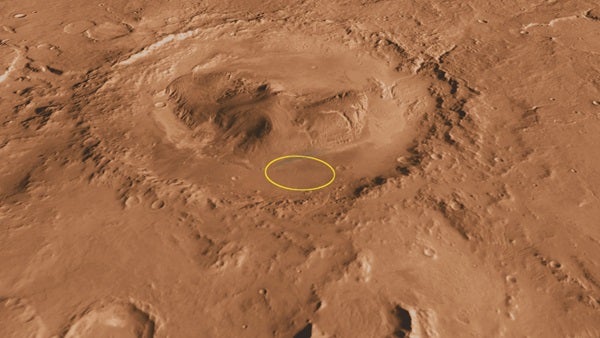Mars’ past may have seen a lot of very high-temperature volcanism. Similar to the Mount St. Helens’ eruption of 1980, Mars’ volcanoes would have an abundance of high-temperature and high-silica magma that erupted and then formed newly discovered minerals found in Gale crater.
In a new study published in the Proceedings of the National Academy of Sciences, Richard Morris and his team discovered a silica mineral that could have only formed as a result of ancient high temperature volcanism on Mars.
It is thought that volcanism on Mars is not as frequent as on Earth, but when there are eruptions they are very violent. The last one is believed to have taken place 20 million years ago. As there are no tectonic plates, the “hotspots” of volcanic activity remain fixed on the martian surface, as evidenced by the Tharsis bulge. This volcanic activity is thought to come from melting hot mantle plumes under the martian crust.
Utilizing the X-ray diffraction instrument on NASA’s Curiosity rover, Morris and his team found traces of the mineral tridymite in a drill site in Gale crater. Tridymite is normally only associated with silica-rich volcanism that can have explosive and high-temperature eruptions similar to the volcanism seen in the Cascades on Earth, says Morris.
“This mineral forms only at temperatures greater than about 900 degrees Centigrade,” Morris says. “So it was a real shock to us that what we may have here is a marker for a different kind of volcanism on Mars.”
Most silica-rich volcanism is due to Earth’s plate tectonics diving into water in the crust. Because of this, the basalt forms these silica-rich and high-temperature magmas that then erupt from the volcanoes, says Morris. As there are no observable plate tectonics that exist on Mars, Morris and his team do not know what truly caused these minerals to form.
Morris and his team have combed through lots of terrestrial literature to see if tridymite could form at low temperatures as what might actually be seen on Mars; sadly nothing was found to validate their hypothesis.
“Our present idea, and this is simply because we found no low temperature formation process, was that their was high temperature, silicica volcanism occurred at some time on Mars and then was carried into the lake,” says Morris.
Morris and his team are conducting many tests to determine the origin on this tridymite found on Mars. As they are not sure where or when this could have occurred, Curiosity is heading up to Mt. Sharp to search for more evidence of this material; meanwhile in the laboratory at NASA’s Johnson Space Center, the team is trying to make tridymite through geological processes at lower temperatures.
“Now if it can be shown that you can make it at lower temperatures in a sediment then that turns the ball game around. We looked quite hard for evidence of that, but its not turned up if that can be done yet,” says Morris. “This was really an exciting discovery and we will see how all the forks down the road take it. Stay tuned.”










